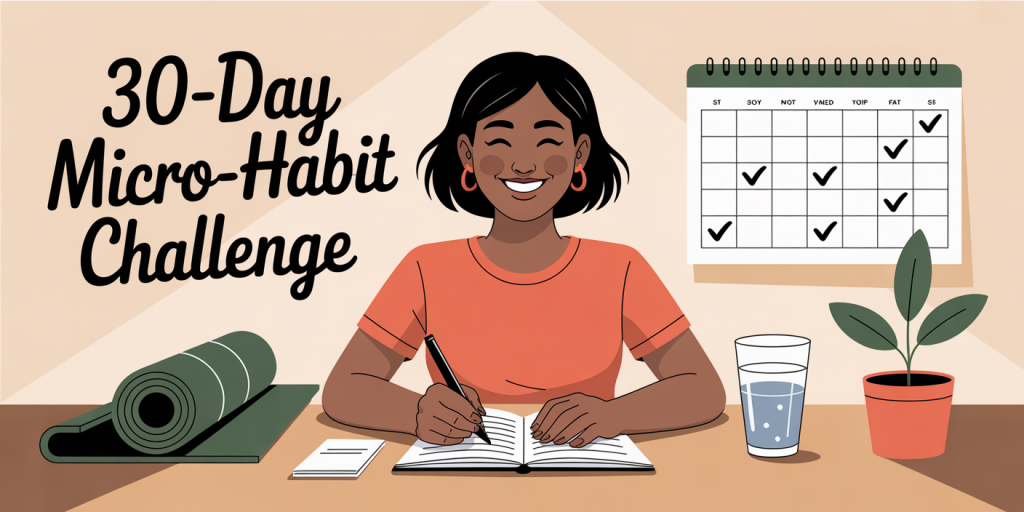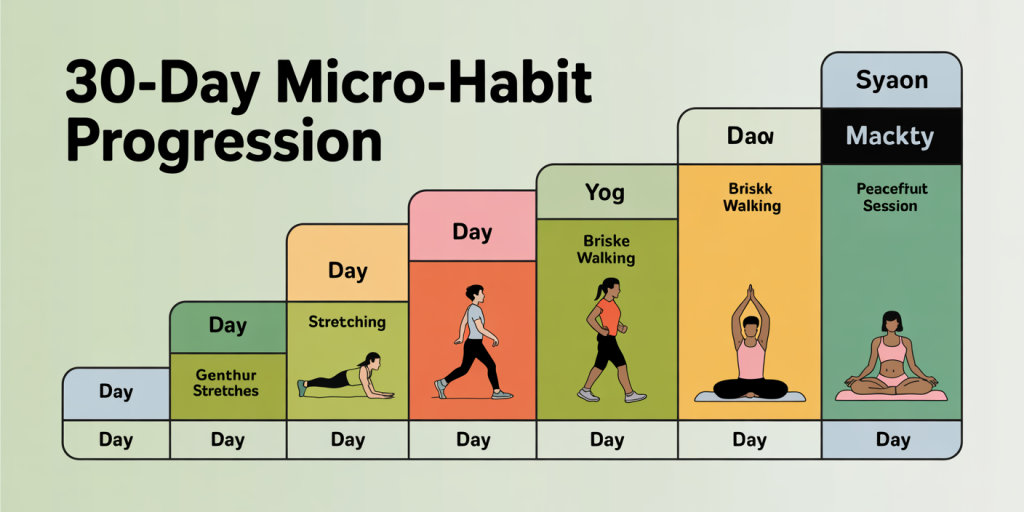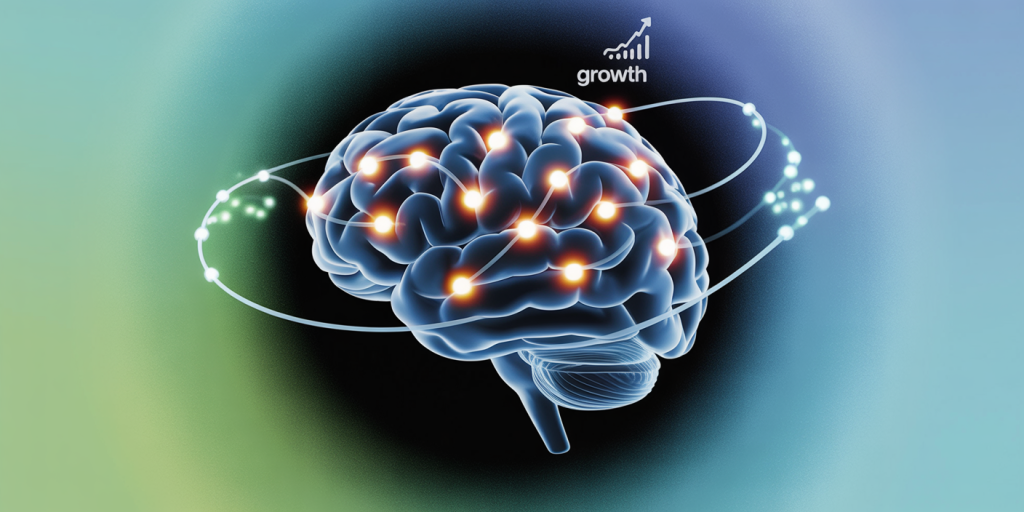The 30-Day Micro-Habit Challenge: Reset Your Routine Without Burnout
In today’s fast-paced world, many individuals struggle to maintain consistent habits that improve their lifestyle, whether in health, productivity, or mindset. Traditional goal-setting often leads to burnout because of overwhelming expectations and all-or-nothing thinking. The 30-Day Micro-Habit Challenge emerges as a powerful alternative, allowing people to reset their routines through manageable, incremental changes that fit seamlessly into daily life.
Micro-habits, defined by their minimal effort and time commitment, enable gradual transformation without the stress associated with radical shifts. Integrating these micro-habits into a structured 30-day timeline encourages consistency and builds momentum, often leading to lasting improvements. Research from Duke University suggests that habit formation varies widely among individuals, averaging about 66 days, but starting small is crucial for success (Lally et al., 2010). This challenge maximizes adherence by minimizing the initial action required.
Understanding Micro-Habits and Their Psychological Impact
Micro-habits revolve around the concept that tiny actions can lead to significant results over time. Unlike traditional resolutions or habit change plans demanding substantial lifestyle overhauls, micro-habits emphasize starting so small that it feels almost effortless. For instance, committing to drinking one glass of water every morning or doing five minutes of stretching creates a foundational behavior that can organically expand

Illustration of a person starting a 30-day micro-habit challenge: small daily actions like drinking water, stretching, and journaling, showing gradual routine improvement over time.
Anúncios
Psychologically, micro-habits leverage the principle of “behavioral momentum.” When an individual completes a small habit daily, it triggers dopamine release, reinforcing positive feelings and increasing the likelihood of repetition. This dopamine-regulated reward system explains why smaller goals feel achievable and psychologically rewarding compared to daunting expectations, which can discourage attempt altogether (Kringelbach & Berridge, 2017).
Anúncios

Conceptual image representing the psychological impact of micro-habits: dopamine release, behavioral momentum, and stress reduction, featuring brain activity and positive emotional reinforcement.
Consider the case of Sarah, a marketing manager overwhelmed by her sedentary lifestyle. She began by committing to 3 minutes of light stretching after waking up. Within a week, this routine expanded to include a short walk and basic yoga poses. These gradual additions happened naturally as the micro-habit became ingrained, enhancing her energy levels and mood without forcing her to adopt a rigid fitness schedule.
—
Structuring the 30-Day Micro-Habit Challenge
The challenge is best structured around incremental habit formulation principles—start super small, build consistency, and gradually ramp up intensity only when ready. The first week involves selecting one micro-habit aligned with key life areas such as hydration, physical activity, mindfulness, or productivity. For example, Day 1 could be as simple as “write down one thing you are grateful for” or “drink an extra glass of water.”
In the subsequent weeks, participants continue the chosen habit daily with slight increments if desired but are encouraged to focus on habit stabilization rather than rapid growth. The challenge recommends journaling or tracking progress, as data-driven feedback is linked to increased habit adherence (Fjeldsoe et al., 2011). Over 30 days, these micro-habits accumulate a “compound effect” that positively influences various aspects of health and wellbeing.
The table below summarizes a sample 30-day micro-habit progression for physical activity:
| Week | Daily Micro-Habit Activity | Description | Increment Goal |
|---|---|---|---|
| 1 | 3 minutes of stretching | Basic warm-up and flexibility | Establish routine |
| 2 | 5 minutes of stretching + 1 min walk | Add light walking for cardio | Slightly increase duration |
| 3 | 10 minutes of stretching + 3 min walk | Extend exercise time | Build endurance and variation |
| 4 | 10 minutes yoga + 5 min brisk walk | Introduce diverse movement | Maintain habit with additional challenge |
This gradual increase fosters sustainable engagement and prevents the risk of burnout often linked to unrealistic fitness regimens.

Visual infographic/table depicting the 30-day micro-habit progression for physical activity, highlighting incremental increases from stretching to walking and yoga, emphasizing sustainable habit growth.
Real-World Examples Demonstrating Effectiveness
Multiple case studies highlight how micro-habits alleviate habit-change resistance. Take James, a busy executive prone to stress eating and inactivity. Over 30 days, he committed to “one mindful deep breath before each meal,” a habit that required only seconds but drastically altered his eating behavior. This small intervention helped him recognize hunger cues better and, consequently, reduce overeating without strict dieting.
Similarly, companies like Google leverage “microbreaks” to enhance employee productivity and well-being. These breaks consist of brief, habitual pauses to stand, stretch, or refocus, improving attention span by up to 15%, as reported by a 2016 internal study. By embedding micro-habits into corporate culture, organizations improve overall performance while minimizing burnout risk.
In healthcare, patients with chronic illnesses benefit from micro-habit interventions such as logging a single health metric daily (e.g., blood sugar levels or mood). A study in the Journal of Medical Internet Research demonstrated a 40% increase in medication adherence when micro-habit tracking tools were introduced (Buis et al., 2017). This validates that micro-habits extend beyond wellness into effective disease management.
Avoiding Burnout Through Incremental Change
One of the main advantages of micro-habits is their proven ability to mitigate burnout—a state characterized by emotional, physical, and mental exhaustion. Research published in the *Journal of Occupational Health Psychology* indicates that gradual goal-setting and self-compassion practices reduce burnout prevalence among high-stress professions compared to aggressive productivity pushes (Sirois et al., 2019).
Micro-habits inherently incorporate these principles by emphasizing tiny, achievable steps that honor personal limits. They encourage resilience and autonomy instead of external pressure. For instance, a writer facing creative blocks may start by writing one sentence per day instead of attempting full articles immediately. This gentle approach fosters cognitive ease and motivation.
Moreover, keeping the challenge micro-focused prioritizes consistency over perfection, reducing guilt when disruptions occur. For example, if a participant misses a day of meditation, the minimal time commitment allows swift re-engagement without feeling like a failure. This flexibility protects mental health and encourages positive feedback loops.
Comparing Micro-Habit Challenges to Traditional Goal-Setting
To better understand the effectiveness of micro-habit challenges, a comparative analysis against traditional goal-setting frameworks is useful. The table below outlines key differences:
| Aspect | Micro-Habit Challenge | Traditional Goal-Setting |
|---|---|---|
| Goal Size | Extremely small, ultra-manageable | Larger, long-term, ambitious goals |
| Time Commitment | Minutes per day | Varies—from daily hours to weeks |
| Psychological Impact | Builds momentum and dopamine rewards | Can induce pressure and anxiety |
| Flexibility | High; adjustable and forgiving | Often rigid and binary |
| Risk of Burnout | Low; gradual build-up | High; risk of overwhelm |
| Tracking | Simple and frequent | May be complex or sporadic |
| Sustainability | Focuses on habit strength | Focuses on goal achievement |
This comparison highlights why micro-habit challenges often lead to higher long-term adherence and satisfaction. While traditional goals remain valuable for ambitious projects, micro-habits serve as a practical way to reset routine without overwhelming oneself.
—
How to Personalize Your 30-Day Micro-Habit Challenge
Personalization is key to the success of any habit-building effort. The micro-habit challenge should align with individual values, lifestyle constraints, and areas needing improvement. Start by reflecting on current routines and identifying pain points or areas for enhancement. For example, if sleep quality is poor, a micro-habit such as “turn off screens 15 minutes earlier” can be an effective starting point.
Leveraging technology can enhance personalization. Apps like Habitica, Streaks, or Fabulous use reminders and gamification to tailor habit prompts fitting user preferences. Behavioral scientists recommend pairing new habits with existing routines—a practice called “habit stacking” (Clear, 2018). For instance, brushing teeth can be paired with 30 seconds of deep breathing, turning two daily tasks into synergistic actions.
A practical case involves David, who struggled with procrastination. By attaching the habit “open work document” to his morning coffee, he found a consistent entry point into productive work without forcing large time investments upfront. Customizing micro-habits to personal rhythms maximizes engagement and success.
Future Perspectives: The Evolution of Habit-Forming Techniques
Looking forward, the field of habit formation is poised to integrate advanced technology, neuroscience, and psychology to optimize daily routines in unprecedented ways. Emerging tools like wearable biosensors can provide real-time behavioral feedback, allowing micro-habit adjustments based on biometric data such as heart rate variability or sleep quality.
Artificial intelligence might soon deliver adaptive micro-habit coaching, dynamically adjusting difficulty and timing to match individual responsiveness, reducing attrition rates in habit formation programs. Research into neuroplasticity indicates that micro-habit structures could be refined further to target specific brain regions, accelerating the consolidation of positive behaviors (Luders et al., 2018).
Workplace wellness programs increasingly recognize micro-habits as a sustainable wellness strategy, integrating them within mental health frameworks to counteract the rising global burden of burnout and stress-related disorders. Policy makers and educators may also adopt micro-habit methodologies to enhance public health initiatives by lowering entry barriers to healthy behaviors.
In essence, the 30-Day Micro-Habit Challenge symbolizes a shift toward compassionate, evidence-based self-improvement practices, focused on sustainability and psychological wellbeing rather than quick fixes. Its principles hold promise not only for individuals but for organizations and societies emphasizing long-term resilience.
